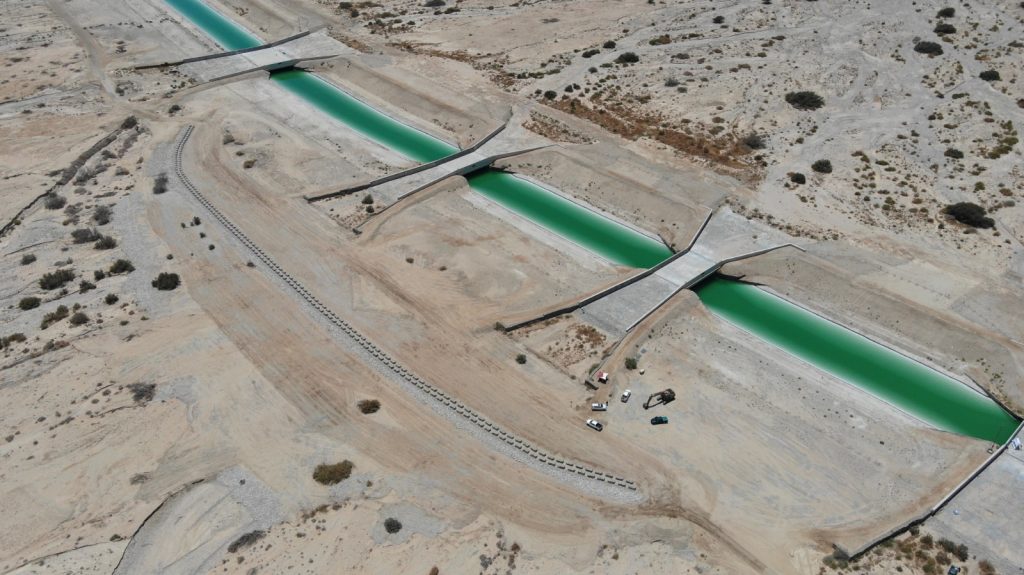The construction of the new pumping station (P-9), which is approximately 4 km to the north of P-88, required the extension of the feeder canal accordingly, as well as crossing the Tze’elim stream alluvial fan.
Alluvial fans have geomorphological importance in arid regions. At the shore of the Dead Sea, alluvial fans are created due to a change in the flow channel’s geometry. The stream channel expands upon leaving the cliffs towards the east, thus decreasing the intensity of the flowing water. Alluvium is redeposited at the bottom of the flow channel. From a deep canyon channel in its mountainous section in the alluvial fan, the stream becomes a shallow, multi-channeled stream with a braided channel pattern. In addition, the outline of the channel changes from flood to flood according to the deposited alluvium in a manner that restrains the force of undermining the fan’s soft foundations.
The alluvial fan is characterized as an ecosystem wherein a geomorphological system exists, having multiple flow channels whose outlines change from year to year, creating a dynamic and heterogeneous system, both temporally and spatially.
The Tze’elim stream’s alluvial fan is the largest and most developed of all the surviving fans, and therefore its preservation is very important, as well as the protection of the biodiversity existing in this habitat.
The feeder canal crosses the Tze’elim fan, and concerns arose regarding significant harm to the fan’s functions. It was therefore necessary to take all possible measures aiming to minimize the effects of crossing the fan. In addition, the feeder channel is exposed to seasonal flash floods in the stream and may be damaged.






